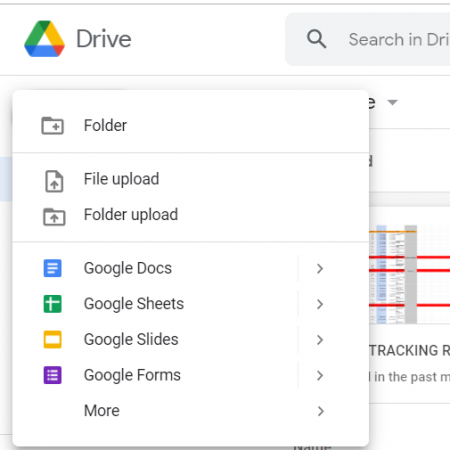Excel to Google Sheets: Easy Conversion Guide

What is Excel and Why Convert to Google Sheets?

Excel, a mainstay in data management and analysis, is a versatile spreadsheet tool known for its vast array of functions, advanced formulas, and powerful data visualization capabilities. However, the need to convert Excel to Google Sheets arises frequently due to several compelling reasons:
- Collaborative Advantage: Google Sheets excel in real-time collaboration, which is essential for remote work or team environments.
- Accessibility: With Google Sheets, your spreadsheets are accessible from anywhere with an internet connection, providing seamless portability.
- Cost-Efficiency: Google Sheets is free for personal use, contrasting with Excel's licensing costs.
- Integration: Integration with other Google Workspace tools like Docs, Drive, and Forms streamlines workflows within the Google ecosystem.
Steps to Convert an Excel File to Google Sheets

1. Uploading Your Excel File to Google Drive

Start the conversion process by uploading your Excel file to Google Drive:
- Navigate to Google Drive and sign in to your Google account.
- Click the "+ New" button in the top left corner.
- Select "File upload" and choose your Excel (.xlsx) file from your local storage.
- Wait for the file to finish uploading.
📝 Note: Ensure the file size is within the limitations of Google Drive (currently up to 5TB per file).
2. Opening and Converting the File

Once uploaded, you can convert the file to Google Sheets:
- Find your uploaded Excel file in Google Drive.
- Right-click on the file to reveal options.
- Select "Open with" and then "Google Sheets."
- Your Excel file will now open in Google Sheets, where you can review, edit, or collaborate on it.
3. Finalizing the Conversion

After opening the file:
- Check for any formatting issues, as some Excel features might not translate perfectly to Google Sheets.
- If you need to share the document, click the "Share" button in the top right corner, set permissions, and enter email addresses to collaborate or give access.
Post-Conversion Considerations

Converting from Excel to Google Sheets can be smooth, but here are some key points to consider:
- Formulas: Most Excel formulas work in Google Sheets, but some might have slight differences or might not work at all.
- Formatting: Complex cell or conditional formatting might need manual adjustments.
- VBA Macros: Google Sheets uses Google Apps Script instead of VBA; your macros will need to be rewritten.
- Charts and Graphs: While Google Sheets supports charts, some Excel chart types or customizations might not be available.
After the conversion, reviewing the document carefully is advisable to ensure all data, formulas, and formatting have been correctly translated.
📚 Note: For complex Excel spreadsheets, manual review and potential adjustments might be necessary post-conversion.
Benefits of Google Sheets Over Excel

While Excel remains a powerhouse, Google Sheets offers several unique benefits:
- Real-Time Collaboration: Multiple users can work on the same sheet simultaneously, making it ideal for team projects.
- Cloud Storage: No need to worry about backups or losing data; everything is stored in the cloud.
- Mobile Access: Edit spreadsheets on any device with internet access, enhancing mobility.
- Free to Use: Google Sheets provides a cost-effective solution for personal and small business use.
In the world of data management and collaboration, moving from Excel to Google Sheets can significantly streamline your workflow. Google Sheets offers a platform where data can be accessed, edited, and shared in real-time, regardless of where team members are located. The accessibility, cost benefits, and integration with other Google services make it an increasingly popular choice for those seeking efficiency without sacrificing functionality.
Some Additional Tips for Smooth Conversion

Here are some tips to make your conversion experience from Excel to Google Sheets even smoother:
- Always keep a backup of your original Excel file in case something goes awry during the conversion.
- Before converting, ensure your Excel formulas are up to date and functioning correctly to minimize any translation errors.
- If your Excel file uses specific add-ins, find equivalent add-ons for Google Sheets or consider migrating those functionalities to Google Apps Script.
- Understand the limitations of Google Sheets compared to Excel, especially in terms of handling large datasets or advanced data analysis features.
In summary, understanding the conversion process from Excel to Google Sheets, along with recognizing the unique advantages of Google Sheets, can significantly enhance your productivity and collaboration efforts. By following this guide, you ensure a seamless transition while maintaining the integrity of your data. The shift to Google Sheets provides you with greater flexibility, cost savings, and the power of real-time teamwork, making it an excellent choice for both personal and professional use.
Can I convert back from Google Sheets to Excel?

+
Yes, you can easily download your Google Sheets as an Excel file by selecting “File” then “Download” and choosing the Excel (.xlsx) format.
What if Google Sheets doesn’t support my Excel formulas?

+
While most formulas translate well, some might need to be manually adjusted or rewritten. Google Sheets has its equivalent functions, so you may need to do some research or consult Google’s documentation to find the matching function.
Is there a way to batch convert multiple Excel files to Google Sheets?

+
Yes, there are third-party services and scripts available that can automate batch conversions, but you might also manually upload multiple files to Google Drive and convert them one by one.



